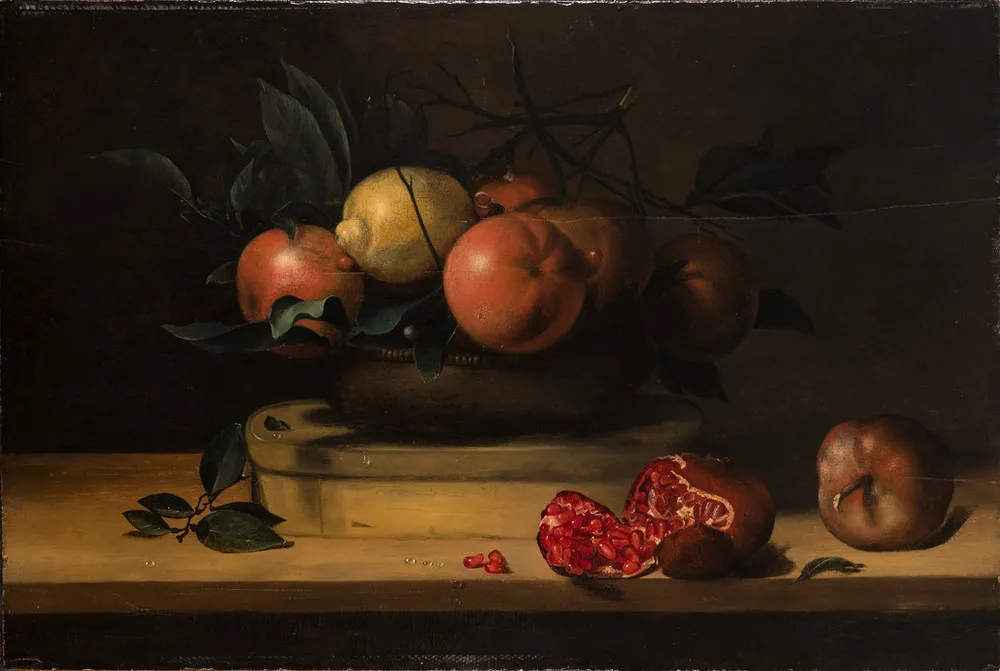As a child, I believed in what I could touch. A lemon was a lemon because I could hold it, feel its waxy skin, slice it open and wince at the juice. I trusted my senses like sacred instruments—if something could be seen and touched, it was real.
But life, and art, have taught me otherwise.
On a trip to Chicago, I stood in front of René Magritte’s The Treachery of Images, the infamous pipe that declares “Ceci n’est pas une pipe.” This is not a pipe. The words disarmed me, even though I knew the punchline. I had seen the image in books, on T-shirts, in college dorms—but there, in the flesh (or rather, in the paint), the painting made its point in silence. I was looking at a picture of a pipe. Not the pipe itself. The difference felt, suddenly, profound. And annoying.
Today, it made me think of another painting: Louise Moillon’s Bowl of Lemons and Oranges on a Box of Wood Shavings and Pomegranates. No slogans here. No cheeky disclaimers. Just fruit and wood and light, rendered with such devotion to detail that the eye wants to believe it’s real. You don’t question it. You lean in. You let the illusion have you.
Where Magritte holds up a stop sign—This is not what you think it is—Moillon holds open a door: Come in. Stay awhile. Taste, if you dare.
The tension between the two is delicious. One uses language to sever image from reality. The other uses image to seduce the eye into belief. And on this April Fools’ Day, it feels like both are playing the same game—just from opposite ends of the table.
Trompe l’oeil is, after all, a trick. A wink. A con. But unlike the magician who pulls a rabbit from a hat, Moillon’s illusion isn’t about shock—it’s about intimacy. Her fruit rests in stillness. The wood shavings curl with quiet delight. The box seems heavy with meaning, though it says nothing. It’s not about showing off. It’s about showing up—carefully, attentively, almost reverently.
Magritte’s treachery makes me suspicious. Moillon’s makes me believe.
And maybe that’s the heart of it. We want to be fooled—not by lies, but by beauty. We want to reach for the lemon and find it cool in our palm. We want to trust that what we see might also be what we feel. But we also carry Magritte’s voice in our heads, reminding us: This is not a pipe. This is not a lemon. This is not what you thought it was.
I’ve lived long enough to know both kinds of deception. The ones that delight. The ones that wound. I’ve misread paintings and people alike. I’ve mistaken signs for substance, shadows for truth. But I’ve also learned that being fooled—when done with eyes wide open—can be its own kind of wisdom.
Annie Dillard wrote, “We still and always want waking. We should amass half-dressed metaphors and compare them against the world.” Maybe that’s what Moillon and Magritte offer: two metaphors in partial dress. One invites the senses; the other demands the mind. One says look closer, the other says look again.
Today, I choose to be fooled—with full knowledge of the trick. I choose to let Moillon’s bowl of fruit live in its stillness, glowing with the possibility of taste. And I choose to stand again before Magritte’s pipe, nodding at its refusal, smiling at its defiance.
After all, what is art if not the most elegant deception we allow ourselves to believe?
